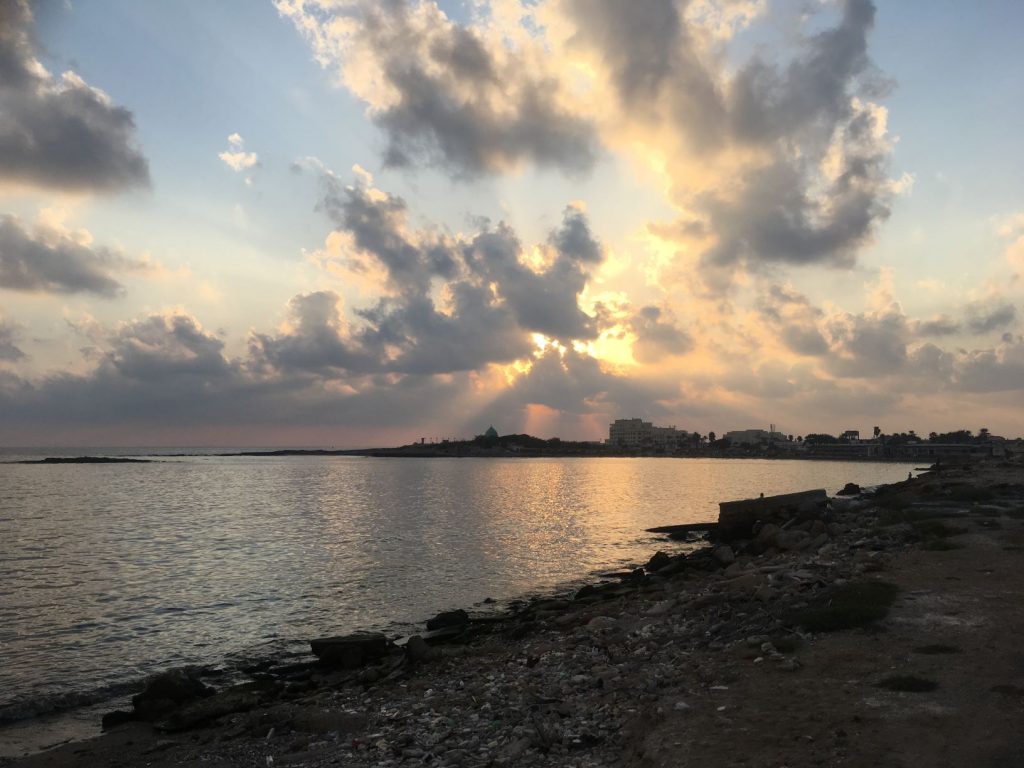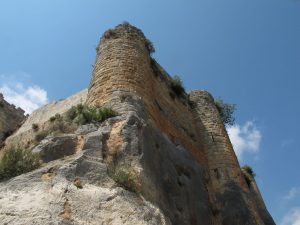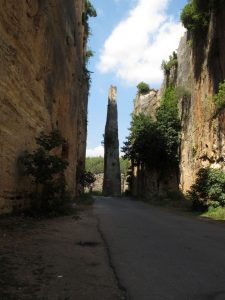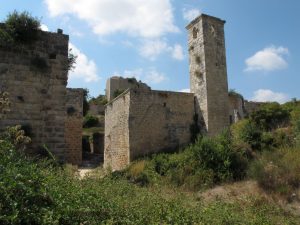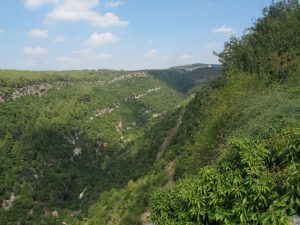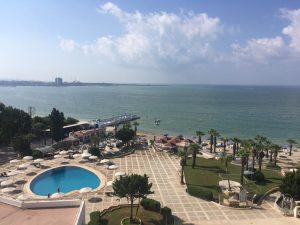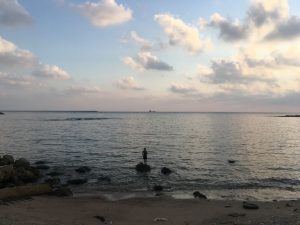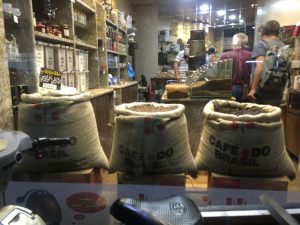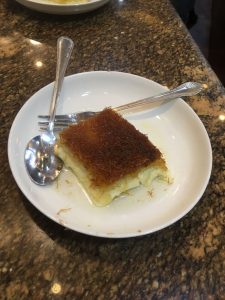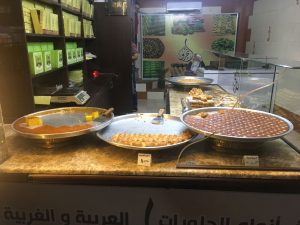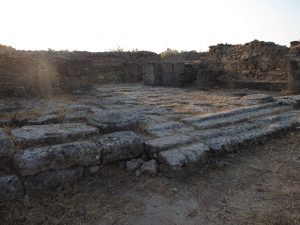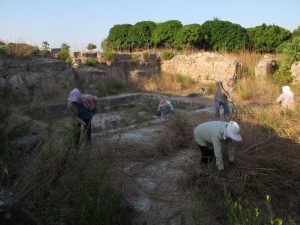Latakia, Syria – On the morning of September 1st, foreign journalists invited to visit Syria by the local Ministry of Tourism left Al-Nasrah, close to the Lebanese border, to Latakia, a port city on the coast of the Mediterranean Sea and the country’s fifth largest city, around 140 kilometer northwest. Part of the Argentinian delegation returned to Damascus, while this ANBA reporter went on with a group of Czech media professionals.

With the war and international sanctions, Syria has rationed fuels, since it doesn’t produce enough to supply its demand and struggle to import. Each driver is entitled to a limited monthly ratio, and lwhile eaving Al-Nasrah, we could already see long lines forming near gas station, as it was the beginning of the month.
Talking to Czechs, another tale of encounters arose, like the one of the Argentinian journalist who found his cousin in Maaloula, published last Wednesday. A Syrian older man from Aleppo that accompanied the group was a friend from college of one of the European journalist’s father in the 1970s in Czechoslovak .
On a previous trip, the guy searched for his father’s friend in Aleppo, but he only knew his name and profession and didn’t have the right address. While asking around Syria’s largest city if anyone knew him, he was surprised by the locals’ solidarity. A great network was formed, a person calling another for information, until the man was found. A very friendly man, he accompanied the team and helped with explanations ant translations. He speaks Slovak, a language very similar to Czech.

On the way to Latakia on the coast, the group stopped by the road to behold from afar Qal’at Al-Marqab, a Crusaders’ castle on top of a hill in Baniyás, between Tartus and Latakia. The fortress has an outpost close to the beach where occupiers could watch the comings and goings in the sea. The Arabic name means “Watch Castle,” referring to the tower.
The medieval crown jewel around there, however, is Qal’at Salah El-Din (Saladin Castle). A Byzantine castle from the 10th century, it was expanded by the Francs in the 12nd century and later by the Ayyubid dynasty, founded by Saladin, a hero that conquered it in 1188. Before that, it was called Sahyun Castle. The site is recognized as a World Heritage Site by United Nations Educational, Scientific and Cultural Organization (UNESCO), as well as Crac des Chevaliers, also in Syria, which is on the list of World Heritage in Danger since 2013.
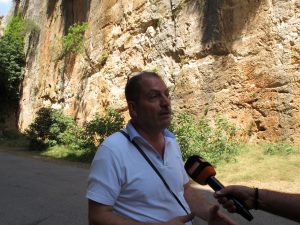
The remarkable monument is 30 kilometers east from Latakia on an area of mountains and green valleys. The castle is on top of a rock, which was split by the human hand, creating an underpass. Up above, both parts were linked by a bridge in the Middle Ages, sustained by a pinnacle in the middle of the rift.
“It’s the largest castle in Syria, and maybe the whole Arab region,” said Latakia’s Antiquities and Museums Department director Ibrahim Kherbek, who was there. The castle itself has an area of 6.5 hectares, while the overall site has 129.5 hectares.
To maintain the monument, he said, “Syrian government pays what it can,” and there are also funds from institutions such as UNESCO for “documentation and some restoration.” Unlike Crac des Chevaliers, Saladin Castle didn’t see any of the fights in the war started in 2011.
Inside, the fortress is a maze of keeps, walls, stables, cisterns and other buildings raised over centuries. The view to valleys and mountains around is spectacular.
(Story continues after photo gallery)
Tourist spot
Aside from the region’s historic and natural attractions, Latakia is a resort town, so tourism is a major source of revenue for the local economy. The UN estimates that over 80% of Syria’s population is below the poverty line as a result of the war and economic sanctions.
“We want to show everyone that Latakia is a safe place, that they can come. We love to welcome everyone,” said the region’s Promotion and Marketing manager Firas Wardi, who also welcomed the journalists to the castle. “We have sites such as castles, ecotourism, beaches, forests, valleys, mountains… A bevy of attractions,” he said.

There was no fighting in the Tartus and Latakia area during the war, and according to Wardi, the population and the Ministry of Tourism are making efforts to show that the area’s safe. “People from other cities are living here – from Aleppo, Raqqah, Idlib and Deir Ezzor,” he said, referring to cities where fighting was fierce. The manager also said visitors have begun to show up again – even small groups from France, Spain and Italy.
This ANBA reporter even saw Syrian and Russian tourists in Latakia. Russia’s naval and air bases are located between Tartus and Latakia, so there are Russian military residents here. We could even spot a fighter jet flying over the road connecting the cities.
Although there was no material damage, the coastal cities lost many of their sons at war. Military service is mandatory in Syria, and local soldiers joined the fighting elsewhere in the country. At the entrance to Latakia, a poster of president Bashar Al-Assad is surrounded by smaller pictures of local youths who were killed in the war. This is the case in many Syrian cities.
But Latakia’s alive and the shops are bustling. They’re open late into the night, as habitual in Arab countries.
(Story continues after photo gallery)
The first alphabet
On September 2, this ANBA reporter got up early and joined our Czech colleagues to Ugarit, a very ancient archaeological site near Latakia. The ruins set atop a hill called Ras Shamra – “Fennel head,” because the plant grows here – were found by a farmer in 1928. The capital of a kingdom which spanned the area that’s currently the Latakia province, the city saw its heyday between 1,600 and 1,200 BC. Here, the world’s oldest alphabet was found, inscribed in cuneiform characters in a small slab of clay.
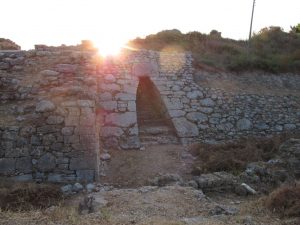
Arriving in the city as the sun rose behind the ruins of its ancient gates was a near-supernatural experience. Kaisar, a local guide, led the group on a tour of the site. “Only one third of the area has been discovered,” he said. The finds include the royal palace where the alphabet was found. “And there are traces of even more ancient civilizations underneath,” he remarked.
He showed us the palace and parts of the city, including what is believed to have been a brothel, and the tomb of Rabanus, an illustrious citizen, probably the king’s scribe, judging by the number of books found onsite.
(Story continues after photo gallery)
The car broke down

After the tour, it was time to try to find diesel for the trip back to Damascus, some 350 km to the south. The party stopped at several gas stations, to no luck, until the driver left the journalists at the hotel to get breakfast and continue searching by himself.

The van got fueled up, but the problems didn’t end there. Under a heat of 30-plus degrees Celsius, the engine overheated and we had to stop to let it cool off and get cold water in the radiator. The malfunction persisted, and we had to stop every 10 minutes until rescue came: two mechanics in a Brazilian-made Saveiro car and a minibus to carry the group for the remainder of the trip to the capital.
This is the final chapter in ANBA’s special series on Syria, but we’ll be covering the country again next week.
*ANBA traveled at the invitation of Syria’s Ministry of Tourism. Translated by Guilherme Miranda & Gabriel Pomerancblum.



